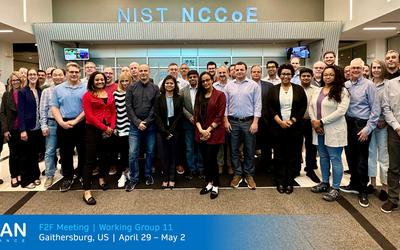Next-generation Radio Access Networks (RANs) are characterized by the disaggregation of the network elements and the use of intelligent controllers to manage the increased complexity of radio technologies and network deployments.
The disaggregation of the network elements to create an Open RAN that allows the equipment from different vendors to communicate requires well-defined, standardized interfaces. Furthermore, the increased complexity of the network and the need for real-time control forces the network operators to investigate automated solutions based on Machine Learning (ML) algorithms. The standardization effort is being led by the O-RAN Alliance, an international community of mobile network operators, vendors, and research and academic institutions operating in the RAN industry. NIST, also a member of the O-RAN Alliance, is well-positioned to assist the telecom industry by developing methodologies and tools to assess the interoperability and performance of Open RAN solutions.
NIST is leveraging its experience in Advanced Communications and focusing on researching new and emerging technologies as part of its mission. NIST's goal is to provide innovators with tools, evaluation technology, data, and strategies to help them focus on market deployment. NIST is conducting research on Open Ran Networks to develop scientific strategies in partnership with the Open RAN community and define and quantify interoperability.
NIST aims to support Open RAN's goal of disaggregation by enabling varied solutions and vendors for each part of the architecture. Integration of deployed systems by large vendors is already evident, which defeats the purpose of the open architecture, disaggregated approach. NIST aims to lower the barrier to entry and achieve vendor diversity of Open Ran and make testing suitable for Government use of Open RAN.
NIST R&D:
NIST is conducting research on Open RAN Networks with a focus on developing scientific strategies for optimizing multi-vendor devices, ensuring security, and promoting interoperability in collaboration with the Open RAN community. NIST researchers are utilizing machine learning algorithms to conduct side-by-side testing that emulates realistic configurations and scenarios. This allows for a thorough examination of critical communication systems for federal and commercial stakeholders, utilizing NIST's Open-RAN Testbeds. NIST has three primary Open RAN partnership thrusts that inform its R&D efforts:
- Open-Source Platform: Evaluate various open-source implementations, develop recommendations to enhance testing efficiency and trust by USG, and support component testing of 5G Security and RIC prototypes for small businesses and academia.
- AI/Machine Learning: Evaluate algorithms for automation and RAN optimization, develop reference datasets for training and validating ML models and xApps, and leverage simulation and testbed.
- Interoperability: Develop measurement methods to quantify the ability of different vendors to interoperate with each other and develop tools for multi-vendor optimization and performance.
NIST research is part of a larger effort by U.S. Government entities to catalyze the development and adoption of open, interoperable, and standards-based networks. This includes the U.S. Commerce Department’s National Telecommunications and Information Administration Public Wireless Supply Chain Innovation Fund, a ten-year grant program that will help drive wireless innovation, foster competition, and strengthen supply chain resilience. Other agencies such as Department of Homeland Security and Department of Defense are also supporting Open RAN research and development.




